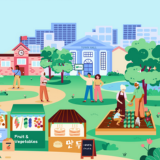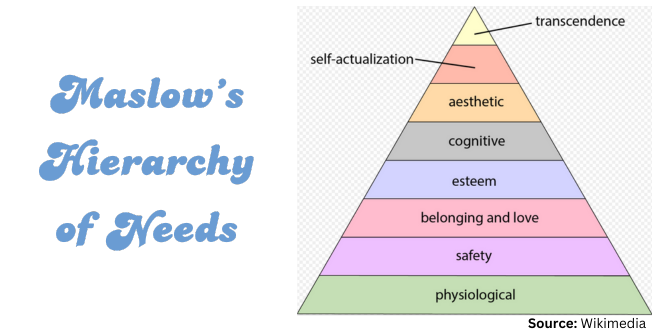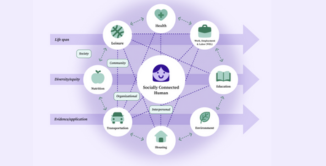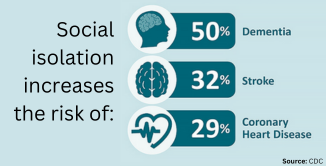
Promising Strategies for Social Connection (Action Guide for Building Socially Connected Communities)
Ideas to support communities, leaders, and change makers interested in creating socially connected communities.
~ Leonardo DaVinci

Our need for connecting with others, or belonging, is as important as our other basic needs. Connectedness is a basic human need.
⭐ Although these civilizations were separated by time and geography, they all had one thing in common: They all recognized that people and communities thrive through connections to one another.
We have other basic needs too. Obvious needs include air, food, shelter, and water. Those other needs are probably easier to recognize, especially when we are younger. After all, it doesn't take long to realize that you are hungry or thirsty. And it takes even less time to know when you must take another breath. Although our basic needs have been discussed and recognized for many, many years, it was a paper written by psychologist Abraham Maslow in 1943 that provided a modern-day codification of those needs.
Maslow's hierarchy of needs is a theory that seeks to explain and explore human motivation. Presented as a pyramid, the lower levels represent more basic needs. Although this hierarchy has been revised over time, its basic premise is still taught and applied in some fashion in many academic disciplines.

Although we are quick to recognize when some of our needs are not met, not all impacts are so obvious. For example, if we lack sufficient shelter, it quickly becomes clear that we are not very well protected from the elements. And without reliable shelter we also might lack the ability to keep ourselves safe or to secure our food and belongings. Similarly, as any parent of a newborn baby can tell you, infants can easily recognize that they are hungry from a very early age.
But as we move up the levels of Maslow's Hierarchy of Needs, the impact on us when we lack those needs might not be as clear to us. If you look at Maslow's Hierarchy of Needs you can see the third level is "belonging and love" and this is the level where we would find connectedness - or what is often referred to as social connectedness.
While we know that connectedness is important for all people, regardless of age, we also know that connectedness is especially important for young people. The impact on children and adolescents who lack connectedness can be significant. For example, young people between the ages of 12-17 years who report they are well-connected at home or school are 66% less likely to experience health risk behaviors associated with violence, sexual health, and substance use.[2] Also, positive peer connections for young people are associated with wellbeing [3] and with school connectedness. [4]
This page was originally developed to highlight the significance of connectedness for game studios entering our 2024 game design challenge. Beyond the information here, we encouraged game developers to do their own research as well because it's helpful to learn some things for yourself and not rely solely on the perspective of others. We have provided links to connectedness organizations and connectedness resources. We hope that by researching and reviewing information about connectedness that you will come to a better understanding of what connectedness is and why it matters. And then we hope that you will play and share the connectedness games when they become available in Fall / Winter 2024. We want these games to engage and empower young people around the world.

A nonprofit organization focused on developing and implementing programs to address social isolation, loneliness, and social connection.
Visit Website
A brief connectedness assessment plus eight easy-to-do strategies to create and build social connections. Presented by AARP Foundation.
Visit Website
"The data are clear that children learn better when they learn in order to teach someone else than when they learn in order to take a test. Learning to teach someone else is prosocial and relies on the social networks of the brain."

Strong social connections boost your immune system, help you recover more quickly, and could lengthen your life. People who feel more connected are more trusting, more cooperative, and have greater empathy for others.

Parents can: model and support healthy relationships; help children make friends who are different from them; foster safe relationships with supportive adults; and talk with their children about stress.